Corn plastic is made from polylactic acid (PLA), which is a plastic substitute, made from fermented plant starch. It is becoming a popular alternative to traditional plastic, which is derived from petroleum based chemicals.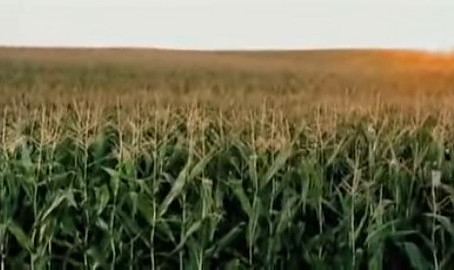 The different uses of polylactic acid could be a way of how to reduce a carbon footprint that is left by fossil fuel plastics.
The different uses of polylactic acid could be a way of how to reduce a carbon footprint that is left by fossil fuel plastics.
Corn starch plastic is an alternative product to petroleum based plastic. It has the same characteristics, but corn plastic is made from corn starch polymers, a biodegradable and renewable resource. It looks like oil-based plastic, but can corn plastic reduce our dependence on oil?
A demand for green products has led to a growing industry for manufacturing corn starch plastic. Many countries around the world have banned the use of traditional, petroleum based plastic bags, so polylactic acid (PLA) is poised to play a big role as a viable and biodegradable replacement. But is it really the case?
What is Corn Starch Plastic and Corn Starch Polymers?
According to Wikipedia, corn starch or maize starch is the starch that is derived from the corn grain. Starch is a natural, 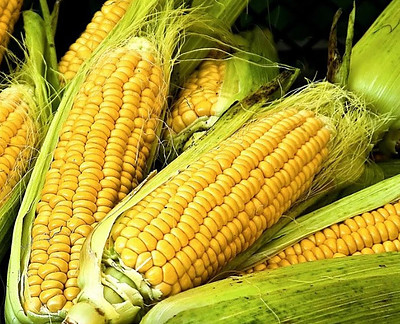 organic polymer of glucose and the corn starch polymer is obtained from the endosperm of the kernel and is commonly used in food preparation. Polymers are long chain molecules that have a basic repeating unit.
organic polymer of glucose and the corn starch polymer is obtained from the endosperm of the kernel and is commonly used in food preparation. Polymers are long chain molecules that have a basic repeating unit.
Corn starch polymers are used to produce bio plastics and it can also be used in the manufacturing of airbags. Corn starch polymers are polymers that are made from alkenes that are mixed with corn starch. This makes them easily biodegradable and can therefore be used as an eco friendly alternative to petrochemical based plastics.
Bioplastics are also known as organic plastics, as it is derived from renewable biomass sources such as corn. Bioplastics can be made from agricultural byproducts or agri waste and is a great way of how to reduce a carbon footprint. Renewable biomass sources, like vegetable oils and fats, corn starch, straw, recycled food waster, wood chips and sawdust, are used to produce bio plastic materials.
Synthetic polymer materials on the other hand, are produced from petroleum, which can be expensive, depending on the price of oil and of course, it is not sustainable.
Corn is the cheapest available source of commercially available sugar, and also the most abundantly available. Corn starch plastic has become very popular as a replacement for traditional plastics as it is more environmentally friendly.
The FDA has approved uses of Polylactic acid (PLA) as a polymer that is Generally Regarded as Safe (GRAS).
How is Corn Starch Plastic Made?
Through modern biotechnology, a colorless transparent liquid called lactic acid, is obtained from starchy corn kernels. A special polymerization process is used to generate a polymer material, called polylactic acid. The components in corn are starch, protein and fiber, and these need to be separated.
These are the steps that are involved in the process:
- Corn is harvested and the crop is soaked and ground in order to separate the endosperm from the fiber and gluten.
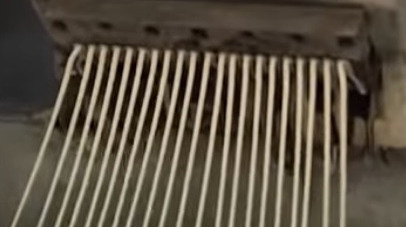 This is a typical step in harvesting the grain crop. The corn kernels are immersed in a solution of hot water and sulfur dioxide, where the components break down to starch, protein and fiber.
This is a typical step in harvesting the grain crop. The corn kernels are immersed in a solution of hot water and sulfur dioxide, where the components break down to starch, protein and fiber. - It is centrifuged to remove the corn oil and almost pure starch is what is left behind.
- Enzymes are added to the starchy endosperm, which converts the endosperm into dextrose, a simple sugar.
- Bacterial cultures are added, which causes the sugar to ferment and turn into lactic acid. Brewers use this same fermentation process to produce beer.
- Lactic acid consists of lactide molecules, which bond into long chains of polymers.
- Bioplastic producers have pellets of polylactic acid plastic at the end of the process. These can be melted to take almost any form, or it can be spun into fibers.
Uses of Polylactic Acid (PLA)
Polylactic acid plastic can be made into a film or a fiber, making it ideal for use in packaging materials. Various manufacturing processes, like thermoforming and injection molding can be used.
The properties of polylactic acid means that corn starch plastics have these qualities:
- Food safe and resistant to food fats and oils.
- Good for print applications.
- Low flammability.
- High aroma barrier.
- Resistant to ultra violet rays from the sun.
- Compostable.
- Recycled by regrinding.
So basically polylactic acid (PLA) comes from fermented plant starch, which mostly comes from corn starch polymers, and is commonly referred to as corn starch plastic.
What is Corn Starch Plastic Used for?
The polylactic particles that are extracted from corn are called corn plastic. The uses of polylactic acid is varied and starch based plastics can be used in a variety of applications, It is increasingly being used in a number of markets from packaging, automotive, catering products, consumer electronics, agriculture and horticulture, toys and textiles.
A multitude of products are currently being made from corn plastic and more are continuously being developed.
- It can be used to make biodegradable packaging materials, food bags and food packaging materials.

- Take out and disposable plates, bowls, cups, cutlery etc.
- Also used in medical implants and surgical devices such as sutures, ligatures and meshes.
- Biodegradable mulch films used in horticulture and farming as it can simply be ploughed back into the soil.
- Binliners and Doggy waste poop bags
- Textiles and accessories.
To use corn plastic plates, cups and cutlery at large gatherings and festivals where everything is thrown away, will be better for the environment, but only if it is disposed of, and composted, in the correct way.
So if you have an event, like Thanksgiving, a birthday party, Christmas, wedding etc. where you require disposable plates and cutlery, then corn starch plastic could be your solution.
- If you are in the USA, order your complete set of biodegradable, compostable corn starch tableware at this link.
- If you are in the UK or EU, please use this link to order your corn starch tableware.
- If you are in Italy, this is the link that you can use for your corn starch polymer tableware.
Lego is looking at bio plastic as an alternative source for making their plastic building bricks and toys, but corn starch plastic is unfortunately too soft to be used for bricks.
Pros and Cons of Corn Starch Plastic
Advantages of corn starch polymers:
- Corn plastic packaging or items made from corn plastic, will decompose within two months of being in a high humidity composting environment, at a temperature of above 60° Celsius or 140° Fahrenheit.
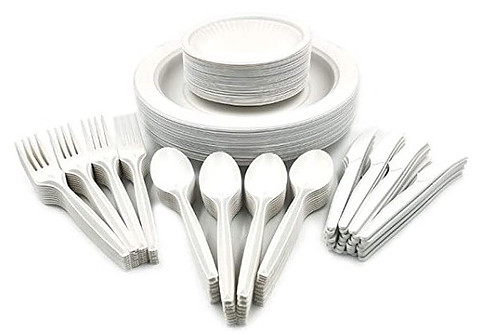 So it returns to the earth, where it originally came form.
So it returns to the earth, where it originally came form. - It comes from a renewable source, corn, which can be planted again.
- Bioplastics will not emit toxic gasses when it is incinerated as it contains no toxins.
- A reduction of 68% of greenhouse gas emissions, compared with production of conventional fossil fuel plastic, so much less greenhouse gases are emitted.
- Corn starch plastic needs 65% less energy to be produced than conventional petroleum based plastics.
- PLA plastic is cost competitive with conventional plastic.
- Using corn starch polymers to make plastic have no danger of explosion during the production process as is the case with petroleum, so it is much safer to work with.
- Organic food waste can be composted with it.
- The bio plastic is free of BPA’s and phthalate, so no worries about endocrine disruption.
- Corn starch packaging has less static electricity than synthetically made packaging materials.
Disadvantages of corn starch polymers:
The biggest disadvantage of bio plastics and corn plastic, is associated with the rate of bio degradation and recycling. Because PLA is plant based, it needs to be disposed of in a composting facility. 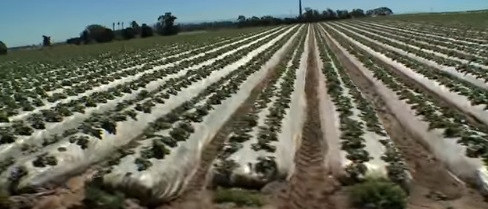
- Corn plastic will only break down and decompose in the hot and humid environment of a commercial composting facility. So it can not be composted at home.
- Very few industrial composting facilities currently exist where corn starch plastic can be composted correctly.
- Composting is not the perfect disposal method as greenhouse gas, methane, is produced when they decompose.
- The recycling stream can be contaminated when consumers put corn starch plastic into recycling rather than composting.
- Inadequate infrastructure to compost PLA, might mean that it still goes into landfill. If commercial composting is not available, PLA plastic could end up in landfill where it will take as long as traditional plastic to break down, or it could get mixed up in plastic recycling.
- Corn starch polymers make regular compost more acidic.
- Material Recovery Facilities are responsible for sorting and disposal of PLA.
- Polylactic acid and corn plastic is typically made from genetically modified corn, so even more concerns about the whole GMO debacle.
- There are moral issues with corn being used as there are people going hungry in the world.
Questions and Answers About Corn Starch Plastic
Why must you not recycle corn plastic with conventional plastic? The two plastics might appear to look the same, but their chemical composition is different. 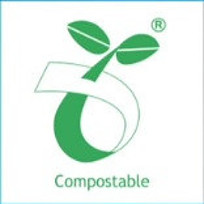 Bio plastic can contaminate traditional plastic recycling and it could mean that the salvaged plastic cannot be used.
Bio plastic can contaminate traditional plastic recycling and it could mean that the salvaged plastic cannot be used.
A landfill is packed so tight, that there is no light or oxygen available to help with the breaking down of the corn starch polymers.
To avoid complication with recycling and composting of corn plastic, many commercial composters will only accept bio plastics from food service operations, and unfortunately not from normal households.
Related post: What is Compostable Plastics?
Is corn starch plastic biodegradable? Yes, it is biodegradable, carbon neutral and edible.
How long does corn starch plastic take to biodegrade? In a controlled composting environment, PLA will decompose into water and carbon dioxide in less than 90 days.
Criticism against corn plastic is that it depends on the industrial farming of large fields of crops and these fields could be used to grow food crops. Much of the corn that is used for bio plastics, is a variety called Number 2 Yellow Dent, which is mainly used for animal fodder. Corn is also used to make ethanol fuel, placing more strain on the farmland.
Is there a Future for Corn Starch Plastic?
I certainly think there is a future for corn plastic. 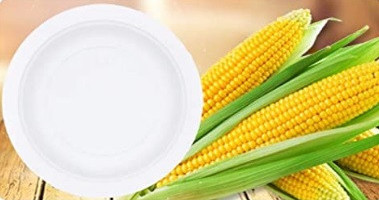 Although the bio plastics market is growing by around 20% each year, it only accounts for less than 1% of the 200 million tons of plastic that is produced each year.
Although the bio plastics market is growing by around 20% each year, it only accounts for less than 1% of the 200 million tons of plastic that is produced each year.
The raw materials that are used to get corn starch polymers are cheap and easy to produce and is a great way how to reduce a carbon footprint. The uses of polylactic acid is varied and diverse and has a lower environmental footprint than fossil fuel plastic.
With a shift towards sustainability and greener options, a company can choose packaging materials that are good for the environment. The advent of corn starch based materials is allowing companies and consumers to use more sustainable plastic alternatives to petroleum based plastics.
Final Thoughts – Can Corn Plastic Replace Traditional Plastic?
Although the uses of polylactic acid (PLA) have a possibility as an alternative to conventional plastic, the issue of disposal needs to be addressed and properly sorted out before it can be completely viable. PLA is a way of how to reduce a carbon footprint, but consumers are better placed switching to reusable products.
So if you really want to make a difference, switch to reusable containers, from water bottles to produce bags and shopping bags, safe lunch boxes and glass containers. Related post: My Plastic Free Life.
Although corn starch plastic sounds promising as an alternative to conventional plastic, the correct disposal and composting of it, means it is not the optimal solution to the plastic waste problem. A far better alternative is to eliminate plastic and take reusable produce and shopping bags with you when you go out.
Switch to reusable food storage containers at home. You are on track to a better and safer environment when you say goodbye to single use plastic.
Related post: What is Wheat Straw Plastic?
I hope you have enjoyed following the journey of a corn kernel to a drinking cup, and if you have any questions or comments about corn starch polymers and what is corn starch plastic, then please leave them below and I will get back to you.

I wonder if it might be possible to buy a kit that lets you compost bio-plastic at home. I don’t see why they need a high temperature: amylase (an enzyme in saliva) works at 30-37°C and breaks starch down into glucose.
There are kits for home composting available. Please contact the manufacturer to see if it would include composting bio-plastic. I hope it helps.
Cornstarch plastic is a step forward from oil-based plastic; I’m sure of that. There are aspects of it that make it fall short of an ideal, sustainable fix. I’m not too concerned about using what we think of as a food product to make plastic instead, because corn is already by far the most abundant ingredient in the American diet. We produce more corn than can be used in any application, food or otherwise, and literal tons of it are burned ar sent to the landfill every year. This is not to say we don’t have a hunger problem–we’re having an unmitigated hunger crisis in the United States right now–but more corn isn’t the answer.
What I’m most concerned about is the monocultures in which conventional corn is grown. Corn is the OG GMO, and the modifications are there to make it grow in an unnatural sea of clones of itself, with depleted, dying soil that’s only there to hold the fertilizers, herbicides, pesticides, fungicides and all the other -cides together. (Man, I didn’t know I could get so worked up about this, but here we are. Buy organic, kids.)
If you’ve made it this far, then thanks for being a witness. Grist for your mill, so to speak.
Corn starch plastic might not be the ideal, but it is a heck of a lot better than virgin plastic. Oh yes, organic is the way to go
The article is well written (I thought the introduction was) I am simply trying to emphasise the need of good trustworthy informative websites and articles, and the best way to do so is source-transparency.
Thank you for your comments.
This is great news to hear about this alternative to traditional petroleum based plastics. It’s important that we find more sustainable ways to produce consumer goods so that we can protect our planets resources for future generations. Reducing toxic byproducts also helps to heal the planet from the harsh processing methods used in the past. Let’s hope that more and more producers can make the switch to this cleaner alternative!
It is indeed great that agricultural waste products can be used to make products that are better for the environment and our health, than using harsh chemicals. I fully agree with you that it is a cleaner alternative.
The research put into creating a content like this has to be commended. Corn plastics from your explanations in this article can possibly replace synthetic plastics and other types of plastic. The issue i can see with plant source plastics is the availability of the raw material. If these materials are not available then it might become difficult commercializing it. Thanks for the insight.
Corn starch plastic can certainly replace synthetic plastics and it is already commercially produced. Corn is a renewable source and could be a good way of how to reduce a carbon footprint that is left by fossil fuel plastic.
Corn starch plastics seem like a great eco-friendly alternative to many other plastics on the market. It is great to see that it can be grinded up to be recycled as well as being food safe. In the world we live in we should truly focus on making products that will be sustainable for our future and reduce pollution and waste. This seems like just right kind of product we need to be using for more things worldwide. Thanks so much for sharing this post!
Corn starch plastic is certainly a great way in how to reduce a carbon footprint left by petroleum plastics, it is just the disposal and composting that needs to be done properly.
Your article on corn starch plastic is very comprehensive. I have not read anything so thorough about this concept. At the end of your article, you mentioned an initial concern I had…. taking potential food to make plastic. This is the conflict in which we find our selves at this time in history. To clean up the world we often need to use something that means that another part of creation is damaged in some way. it becomes of lesser of two evils. I think the corn starch plastic is necessary because the plastic we use so much now will never break down. Thanks for this thought provoking article.
Most of the corn that is used to get the corn starch polymers, would have been used for animal fodder, so often not suitable for human consumption. But yes it is a concern if a possible food source will be used. Unfortunately many of the people that are going hungry in this world, do not live where the excess is growing, so logistics to get food to other parts of the world is a problem in itself.
At least corn starch plastic can help in how to reduce a carbon footprint that is left by fossil fuel plastics.
That is another interesting form of bio plastic. I have heard about it before but never knew the technology. Thanks for sharing. I am trying to be plastic free and sustainable all the time, but it’s still to hard. It’s always great to hear there are new technologies, new biodegradable products and so on. I think that food bags, bin bags are still the major problem and this alternative looks pretty good. I hope they will sort out their disposal issue soon.
Using corn starch polymers to make plastic is a great way of how to reduce a carbon footprint. I agree that bin bags are still a big problem, together with plastic bottles, but we can all take steps towards my plastic free life, even if they are small steps.
I love your website for the topics it covers: it is really important to improve the knowledge about sustainable economy sharing such content online! I didn’t know that a type of plastic made from corn exist, this has been a very interesting reading to me! Trying to rely less on petroleum has to be our main goal if we want to create sustainable economies. Thank you so much for sharing!
Corn starch polymers have been used for a while to make corn plastic, and it is far better than petroleum based plastics, as long as it is composted correctly. One of the aims need to be to have more composting facilities to enable the proper disposal of corn starch plastic.
Great Content! This mindset to find alternative product to replace the hazardous materials we use and consume on the daily bases. We have so much residual plastic floating in our waterways killing the environment and damaging ecosystems.
I absolutely love your content. It really strikes a positive note on what we can use to better ourselves for the future and future generations. We are only given one earth as our home. We really need to be more focused on preserving what we have.
I fully agree with you Jordan, we can all make a difference to look after our planet and preserve what we have, without adding more hazardous waste.
Thanks for such an eco-conscious article. I love that you’re increasing awareness of the different kind of plastics and their impact on our environment. I do worry about what we are leaving to our children, so articles such as these do promote conscious thinking and discussion. I had never heard of corn plastic before but I would have thought it is some kind of biodegradable plant based product. Your post clarified that it is. Thanks for raising awareness on such an important topic!
Corn starch plastic is indeed a plant based product and as long as it is composted properly, is better for the environment than fossil fuel plastic.